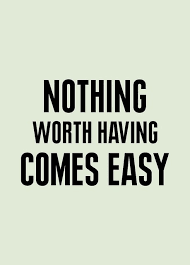Affiliate Your Way to Freedom: Setting Up a Template to Start Producing Content. This is part of a series that takes you on a journey
Engaging content strategies for niche audiences
Welcome back to our “Affiliate Your Way to Freedom” series! So far, we’ve covered the basics of affiliate marketing and explored the importance of niches and keywords, and now it’s time to dive into the nitty-gritty of content creation. In this post, we’ll discuss setting up a template to streamline your content production, whether it’s for a blog or a funnel. Let’s get started!
Why You Need a Content Template
A well-structured template can be a game-changer for your content production process. It ensures consistency, saves time, and helps maintain a high standard across all your posts. Plus, it makes the daunting task of writing easier by breaking it down into manageable chunks.
Elements of a Good Content Template
1. Title and Meta Description:
- Title: Craft a compelling title that includes your primary keyword. It should be engaging and make readers want to click.
- Meta Description: Write a concise meta description 150–160 characters) summarizing the content and including your primary keyword.
2. Introduction:
- Hook: Start with a hook to grab your readers’ attention. This could be a startling fact, a question, or a brief anecdote.
- Overview: Provide a brief overview of what the post will cover. This helps set expectations and keeps readers engaged.
3. Body:
- Subheadings: Use subheadings (H2 and H3 tags) to break up the content into sections. Each subheading should include a relevant keyword.
- Content: Write informative and engaging content under each subheading. Use short paragraphs, bullet points, and numbered lists to enhance readability.
- Visuals: Include images, infographics, or videos to support your content. Visuals can help illustrate your points and keep readers engaged.
4. Call-to-Actions (CTAs):
- In-text CTAs: Include subtle CTAs within the content, prompting readers to take specific actions like signing up for a newsletter or clicking an affiliate link.
- End-of-post CTA: Conclude with a strong CTA encouraging readers to take the next step, whether it’s buying a product, reading another post, or sharing your content.
5. Conclusion:
- Summary: Summarize the main points discussed in the post. This helps reinforce the information and makes it easy for readers to remember.
- Engagement: Ask a question or invite readers to leave comments, share their thoughts, or connect on social media.
6. SEO Elements:
- Keywords: Ensure your primary and secondary keywords are naturally integrated throughout the post.
- Internal and External Links: Include internal links to your other posts and external links to authoritative sources. This helps with SEO and provides additional value to your readers.
Creating Your Content Template
Here’s a practical example of how you can structure your content template for a blog post:
Title:
- How to Start a Successful Blog in 2024: A Step-by-Step Guide
Meta Description:
- Learn how to start a successful blog in 2024 with our comprehensive, step-by-step guide. Perfect for beginners and seasoned bloggers alike.
Introduction:
- Did you know that over 4 million blog posts are published daily? If you want yours to stand out, you need a solid plan. In this guide, we’ll walk you through the steps to start a successful blog in 2024.
Body
1. Choose Your Niche (H2)
- Choosing the right niche is crucial for your blog’s success. It should be something you’re passionate about and have a profitable audience.
2. Set Up Your Blog (H2)
- From choosing a domain name to selecting a hosting provider, we’ll cover all the technical steps to get your blog up and running.
3. Create High-Quality Content (H2)
- Content is king. Learn how to create valuable, engaging, and SEO-friendly content that attracts and retains readers.
4. Promote Your Blog (H2)
- Discover effective strategies for promoting your blog, including social media marketing, email marketing, and SEO techniques.
5. Monetize Your Blog (H2)
- Explore various monetization methods, from affiliate marketing to sponsored posts, and find out how to make your blog profitable.
Call-to-Actions:
- Ready to start your blogging journey? Click here to sign up for our free blogging course!
Conclusion:
- Starting a blog can seem overwhelming, but with the right approach, it’s entirely achievable. Remember, consistency is key. Keep learning, keep improving, and success will follow. What niche are you passionate about? Let us know in the comments below!
SEO Elements:
- Primary Keyword: start a blog in 2024
- Secondary Keywords: successful blog, blogging guide, blog monetization
- Internal Links: [How to Choose a Niche], [SEO Tips for Bloggers]
- External Links: [Best Blogging Platforms], [Content Creation Tools]
Implementing Your Template
Once you have your template, it’s time to put it to use. Here’s how:
- Customize for Each Post:
- Tailor the template to fit the specific topic of each post. Adjust the subheadings, keywords, and CTAs as needed.
- Stay Consistent:
- Use the template consistently across all your posts. This helps build a recognizable brand and improves the user experience.
- Review and Revise:
- Regularly review your template and make adjustments based on performance and feedback. Stay flexible and open to changes that can improve your content quality and engagement.

Conclusion
Setting up a content template is a crucial step in your affiliate marketing journey. It not only simplifies the content creation process but also ensures consistency and quality across your posts. Remember, the key to success is to start producing content regularly, analyze what works, and continuously refine your approach. With a solid template in place, you’re well on your way to achieving your goal of financial freedom through affiliate marketing.

Stay tuned for our next post in the “Affiliate Your Way to Freedom” series, where we’ll dive into the world of effective traffic generation strategies. Happy blogging!
Affiliate Your Way to Freedom: Setting Up a Template to Start Producing Content by Peter Hanley
a. Affiliate your way to freedom
b. Affiliate your way to freedom understanding affiliate marketing
c. Affiliate your way to freedom by understanding your niche
d. Affiliate your way to freedom with the power of Keywords
e. Affiliate your way to freedom balancing traffic and competition
f. The indispensable role of AI in marketing





